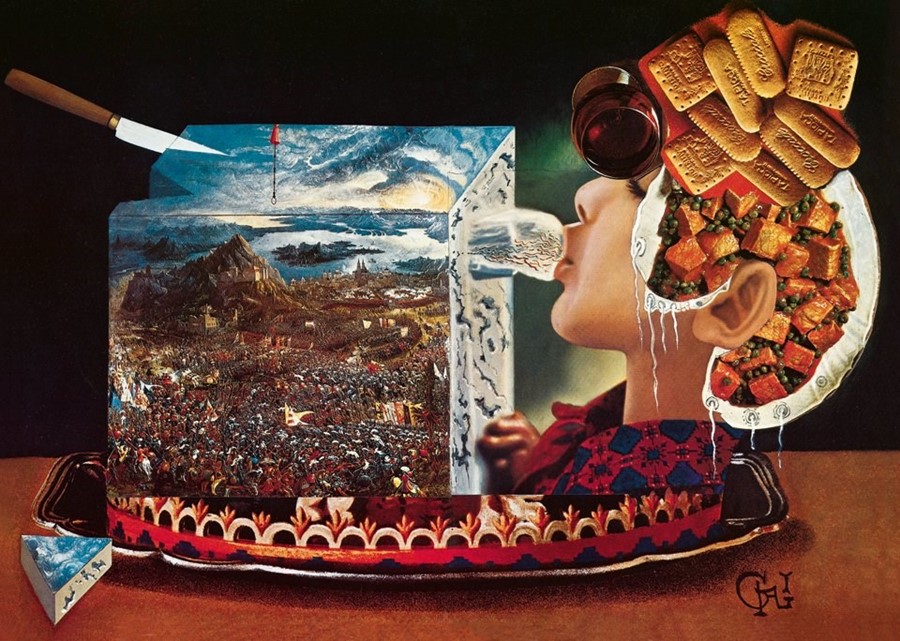From entre-plats to oral sex in three easy steps! As the iconic artist's opulent cookbook Les Dîners de Gala is reprinted by Taschen, we assess what it really takes to dine like Dalí
The history of art has produced few movements more influential than surrealism, and few artists more iconic than Salvador Dalí. It was in the late 1920s that the Catalonia-born visionary began his experimentations with surrealist techniques, fusing optical illusions and suggestive symbols to create visual renderings of subconscious desires. His most famous paintings have been celebrated and endlessly reproduced in gallery gift shops worldwide, but one of his rarest and most immersive tomes, Les Dîners de Gala, a cookbook first published in 1973, was recently reprinted by Taschen. Far from a functional curation of replicable recipes, the book is an amalgamation of illustrations, paintings and hallucinatory prose which collectively form a surrealist exploration of links between sex, food and the subconscious. An emphasis on pleasure makes this unique oeuvre an antidote to society’s fascination with ‘wellness’; these excerpts reveal key themes and demonstrate how to do dinner, Dalí-style.
The Evasion of “Dietectic Formulas”
Not only is Les Dîners de Gala a work of art, it’s a series of avant-garde recipes and sumptuous illustrations which reveal the wider worldview that pleasure should always take priority. An introductory disclaimer immediately indicates this ideology: “If you are a disciple of one of those calorie-counters who turn the joys of eating into a form of punishment, close this book at once; it is too lively, too aggressive and far too impertinent for you.” Furthermore, paintings including Nocturnal Cravings highlight the subconscious ways in which we desire food, indicating one clear message – give in to temptation.
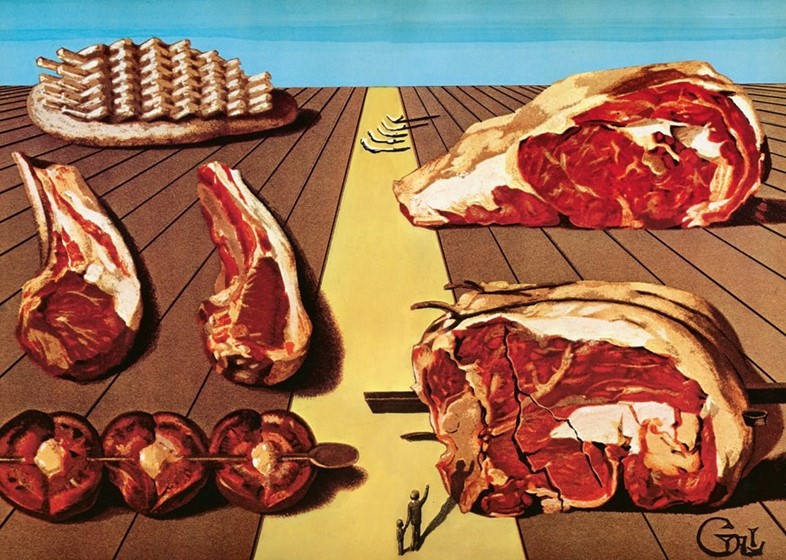
Entre-Plats Sodomisés
Sexual references characterise Les Dîners de Gala. This becomes apparent on the contents page in the form of an ‘aphrodisiacs’ chapter whose title translates as ‘I eat Gala’ – Gala is, of course, the name of Dalí’s wife and muse, implying an unashamed reference to oral sex. Then there’s the ‘Meat’ chapter, whose title, ‘Les Entre-Plats Sodomisés’ translates literally as ‘sodomised in-between plates’. This accompanying painting echoes an earlier image of Gala’s head alongside two raw lamb chops; in his autobiography, he describes eating the chops as opposed to his lover, explaining the chops as “the expiatory victims of abortive sacrifice.”
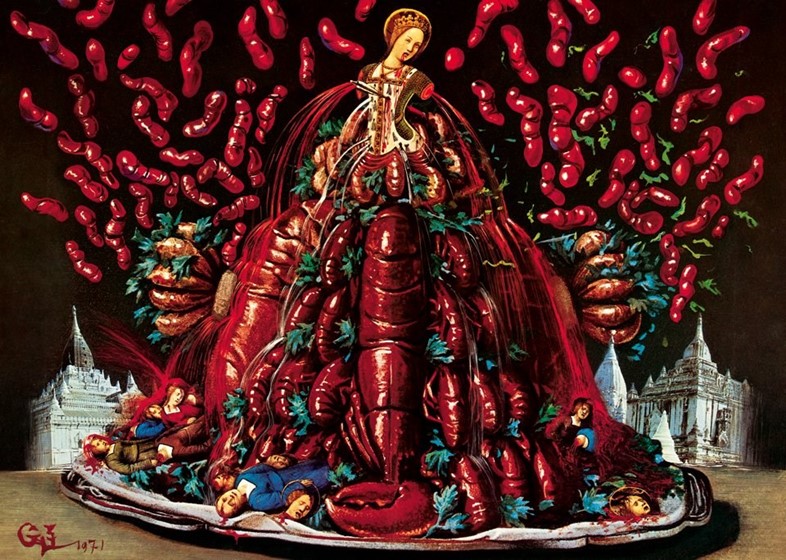
The Lobster as Symbol of Desire
From Dream of Venus to Lobster Telephone, Dalí’s work famously uses the lobster as a symbol of desire. This exemplary image depicts a disembodied woman, her lower half obscured by a blood-red ring of lobsters atop a sea of dismembered heads. A Freudian reading implies the lobster as a symbol of the male fear of castration; it becomes both an object of desire and a symbol of erotic danger. Dalí explains his love for shellfish more innocently: “I love all shellfish… Food that only a battle to peel makes it vulnerable to the conquest of our palate.”
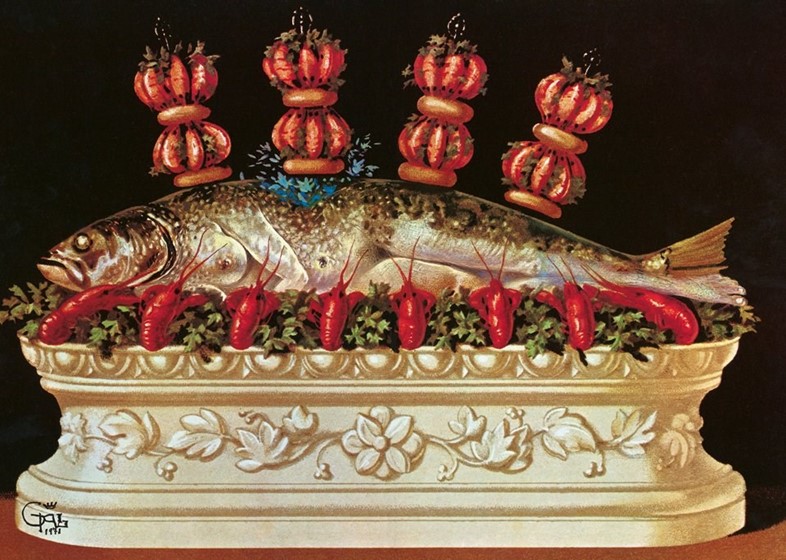
The Eroticisation of Sea Bass
The inclusion of fish in violent scenes is characteristic of Dalí’s work – there’s Dream Caused By the Flight of a Bee Around a Pomegranate, a depiction of a reclining female nude seemingly threatened by tigers leaping from the mouth of a fish, as well as Tuna-Fishing, a surreal fantasy which sees tuna speared to death by technicolour warriors. By contrast, the above illustration transforms the fish into the reclining female nude by implicating the outline of the female form. Clusters of small lobsters appear to be feasting on the flesh of the motionless sea-bass, again implying an erotic undertone.
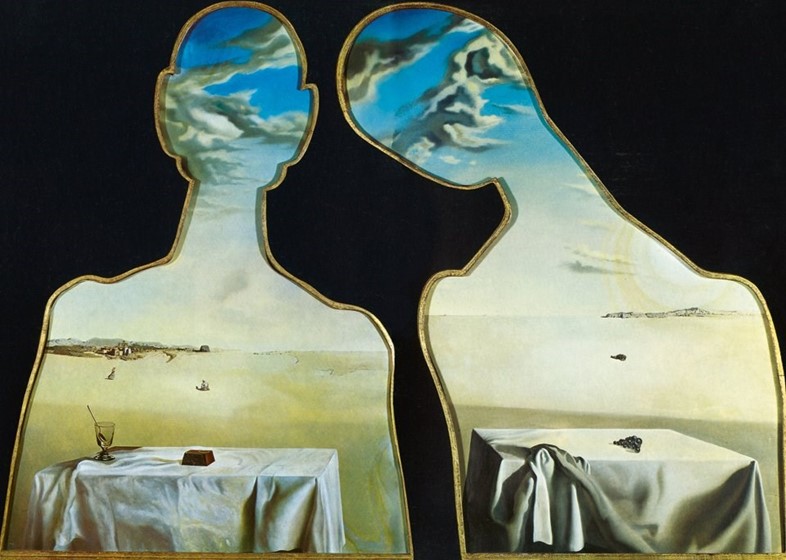
Repurposing Dalí’s Art Archive
Alongside dozens of paintings specific to Les Dîners de Gala, the book features Couple With Their Head in the Clouds, a work originally created in 1936. It’s well-established that the two heads are those of Dalí and Gala – a famous image depicts the duo holding their respective renderings – whereas the transparency of the two figures indicates yet another link between food, sex and the subconscious, thus tying into the book’s predominant theme of food providing pleasure and uniting friends and lovers. It’s a testament to Dalí’s career that one archive masterpiece can slot seamlessly into another – its inclusion is exemplary of his distinctive genius and visual footprint.
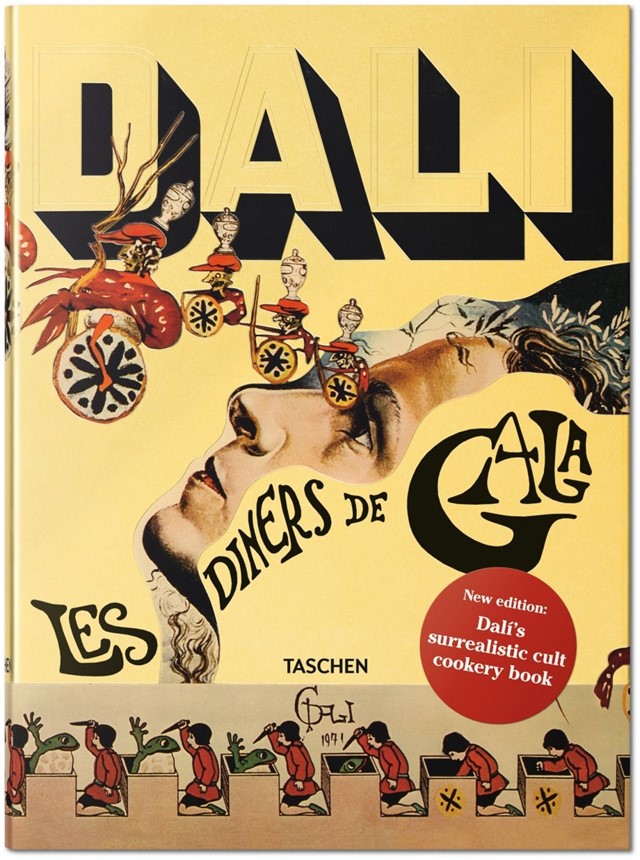
The new edition of Salvador Dalí's Les Dîners de Gala is out now, published by Taschen.
